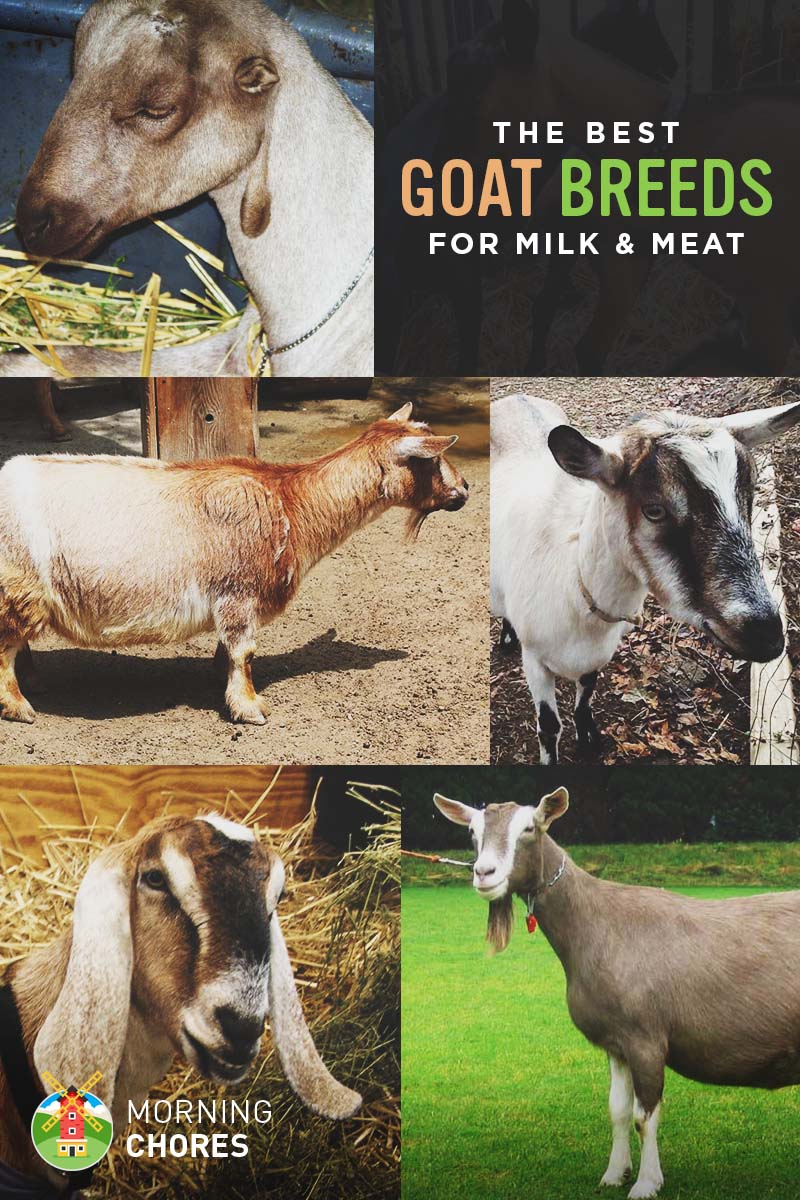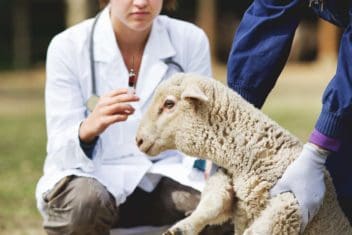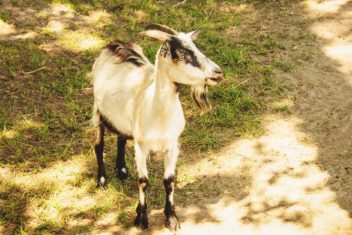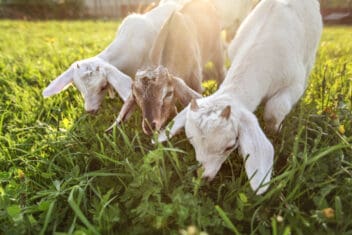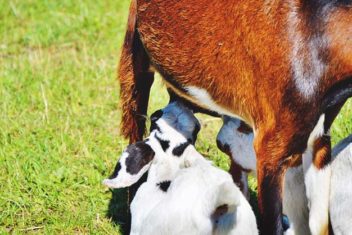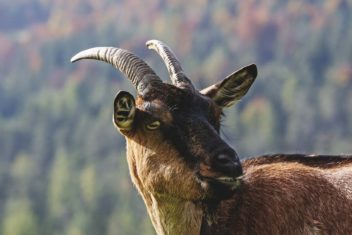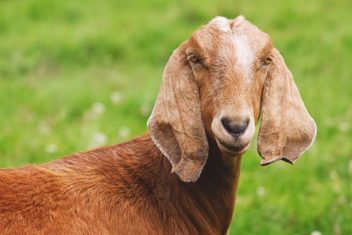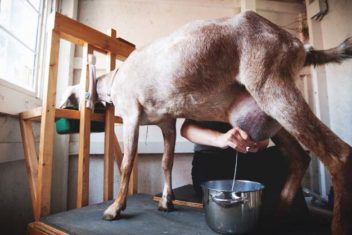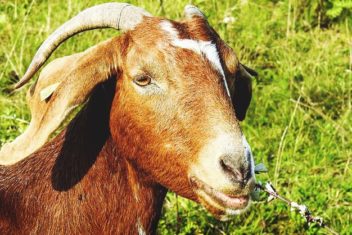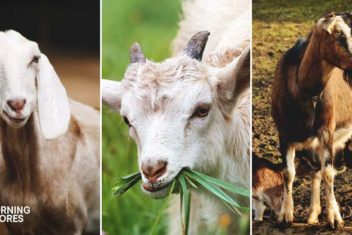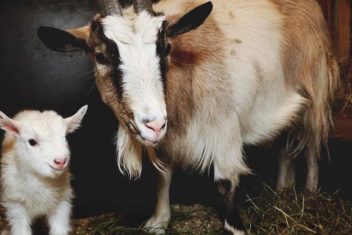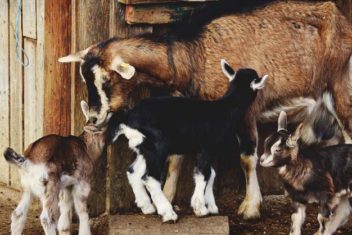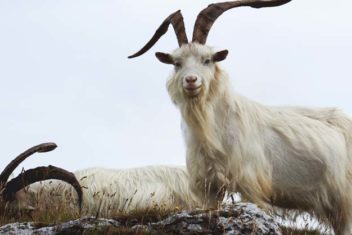Goat is one of the most popular animals for milk and meat production. These cute, friendly animals are much easier to raise than cows, making them the best animal to raise for a small-scale farmer or homesteader.
However, just like cats and dogs, there are different breeds of goats.
Each breed has different meat and milk production rate, if you want to get the most out of your goat, you need to raise the right breed in the first place.
In this article, you’ll learn what is the best goat breeds for milk and meat.
Goat Breeds for Milk
Goat milk is known for having less lactose than other types of milk; it’s easier to digest for people who suffer from Lactose Intolerance. For this and many other reasons, the demand for goat milk is higher than ever.
Plus, who doesn’t love good goat cheese in a salad or on a sandwich?
When looking for a good goat for producing milk, goats must be able to produce a lot of milk. It’s also preferred if the milk can have a higher fat content.
Here are some of the most popular goat breeds for milk.
1. Alpine
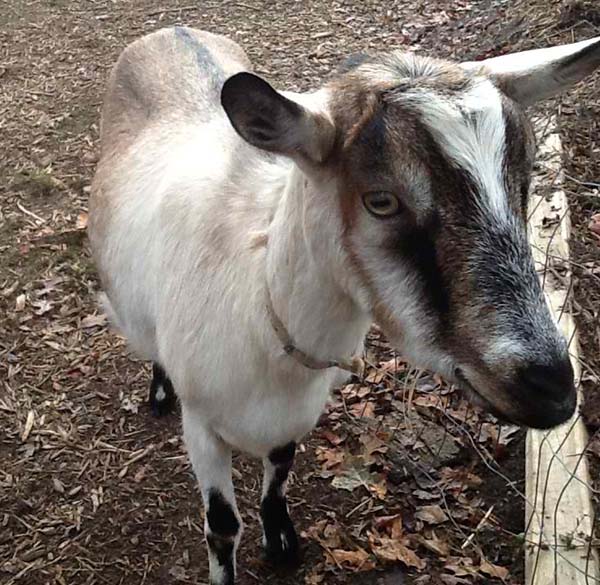
These goats derive from the French Alps, so they are also often called French Alpine goats. The Alpine goat can produce 1 – 2 gallons of milk again. The average about of fat in the milk is 3.5%, which is high. This milk is used to make many thick substances made from milk, such as butter, cheese, and ice cream.
2. LaMancha
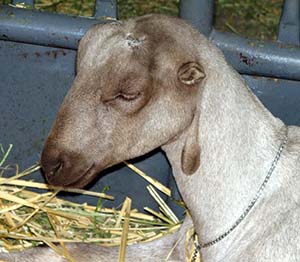
LaMancha goats are not only great for milk, but they are also friendly. These goats have a great personality. They can also be raised in America. However, these goats originate from Spain. Their milk has 4.2% fat concentration.
These goats have small ears or no ears.
3. Nubian
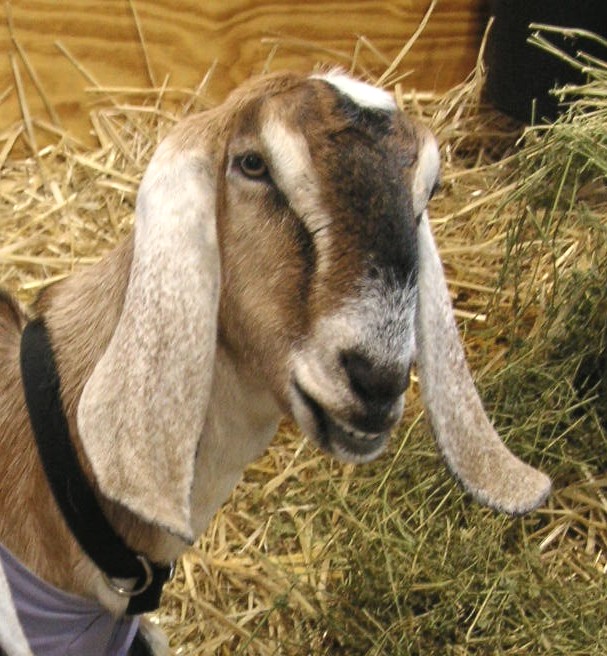
Nubian goats were first bred in England in the 1920s – 1930s.
Nubian goats have one the largest fat content of any of the goat breeds at 5%. They can produce .5 – 1.5 gallons of milk a day. While this isn’t the highest milk producer of the dairy goats, it can produce milk all year long.
The Nubian goats have long, floppy ears, and they are the largest of the dairy goats. Because these goats weigh more and have more meat, they can also be used for meat.
4. Saanen
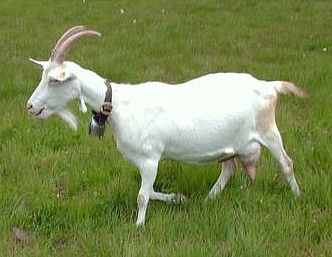
Saanen is the biggest dairy breed. Males can grow to be over 200 pounds. They can have 1 gallon of milk every day. This milk will generally contain 2.5 – 3% of fat. These goats can be used as pets and used for meat production as well.
These goats are primarily domesticated.
5. Toggenburg
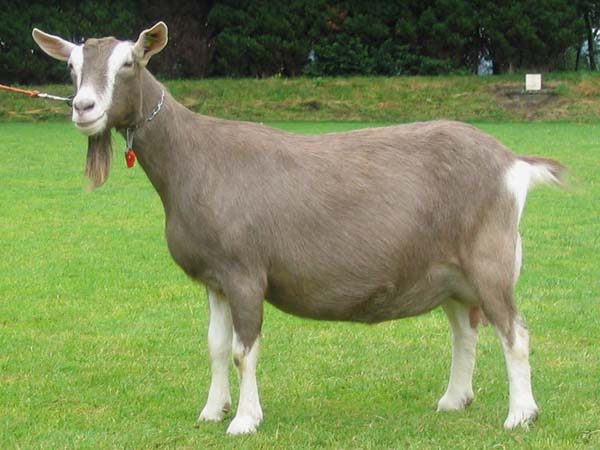
This is one of the oldest goat breeds known, first seen in the 1600s. Toggenburg goats have a straight face, full beards, and they are generally anywhere from light brown to dark brown with white markings. Flaps of skin on the neck are also quite common with this breed.
Toggenburg goats produce milk that has 3.3% of fat, which is relatively low. However, the goat breeds well, which keeps it producing regularly. This breed is particularly hardy, making it ideal to breed with meat producing goat breeds.
6. Oberhasli
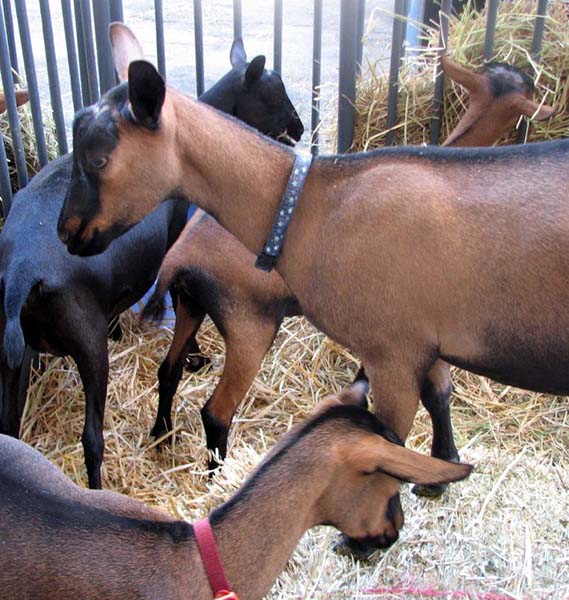
Oberhasli goats produce less creamy milk with 3.6% fat, and the milk can’t be produced all year round. However, they can produce .5 – 1.5 gallons of milk a day. The milk is also very sweet.
They come from Switzerland. They are also quite small, so they are ideal for farmers in urban settings or with limited space. These goats have sweet personalities, but they have the power to cause some damage. For this reason, many times the horns are removed at an early age.
7. Nigerian Dwarf
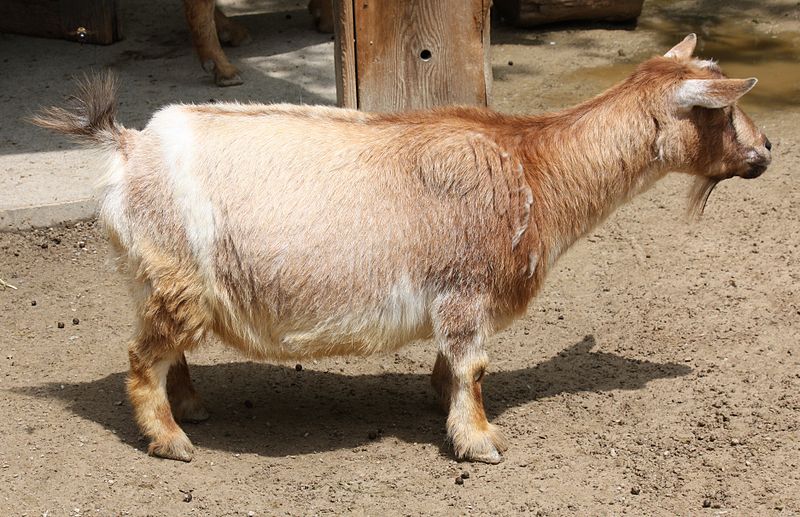
These goats are great for producing your own milk at home. These goats are about half the size of average goats. They only produce a couple of pints of milk a day, but the milk that they produce is 6.1% butterfat. This is extremely rich and desirable.
The Nigerian Dwarf goat originated in Africa. They come in a multitude of colors and usually don’t grow to be more than 23 inches. Many kids of this breed have horns removed.
This breed is also extremely friendly and can be petted. They can even be trained to walk on a leash like a dog.
One of the things that make Nigerian Dwarf goats such good milk producers is that they are prolific breeders.
8. Sable
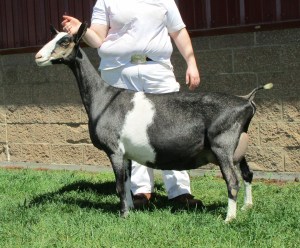
Sable goats are an adaptation of the Saanen. The milk they produce is usually between 3 – 4% fat. The average weight for a Sable goat is 145 pounds. Girls will typically be 30 inches, and males will typically be 32 inches.
Sable goats have large ears, and they have short, thin hair. Some variations have dark coloring that can result in unusual patterns, which is one reason many people enjoy the breed. The dark coloring comes from recessive genes. If the coloring is lighter, the goat would be a Saanen.
9. Guernsey
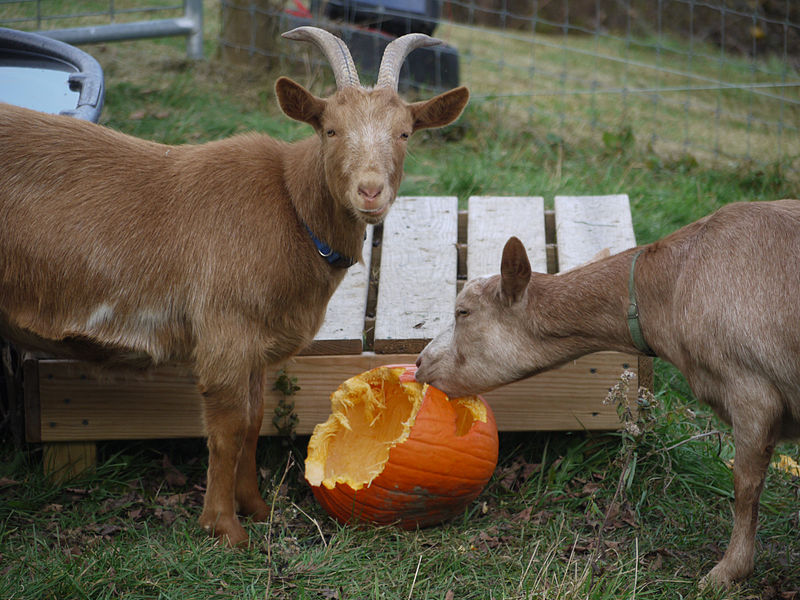
The Guernsey goats are sometimes called olden Guernsey. As the name suggests, the goat is known for its gorgeous golden coloring.
The Guernsey goat breed is the smallest of medium-sized dairy goats. They generally produce 3.16 kg of milk that is 3.72% fat. It is not legal to import Golden Guernsey goats into the United States.
Goat Breeds for Meat
While many Americans might not consider goat meat a popular meat, it is a ready source of nutrition in most places across the world.
Goat meat is relatively healthy with almost as few calories as chicken. It can get dry if you don’t know how to cook it properly, but goat can make a scrumptious and nutritious dinner.
Here are popular goat breeds used for meat production.
1. Spanish
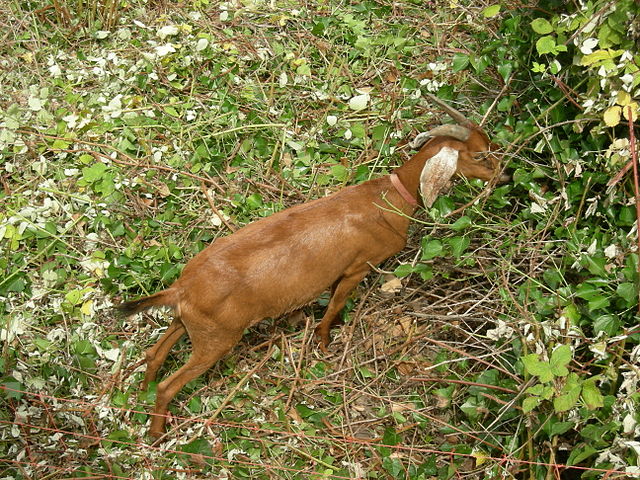
As the name suggests, the Spanish goat originally comes from Spain. They were later brought to Mexico and, later, the United States.
Spanish goats are made for travel and can handle most climates. They are also relatively low maintenance. Another great quality, especially because it is a breed raised for meat, they can breed outside of the normal breeding season. Spanish goats were recently used for producing meat in the 1980s. These goats are also called wood goats, brush goats, briar goats, hill goats, and scrub goats.
2. Boer
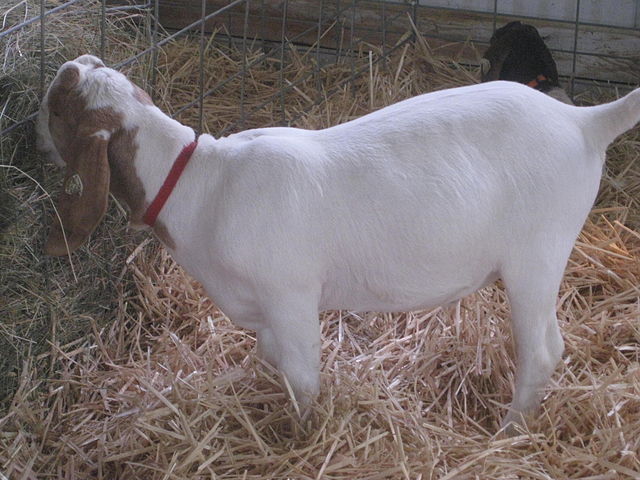
Boer males can grow to be 300 pounds. Because of this large size, they are one of the most popular breeds for meat production. Other advantages are that they are resistant to disease and reproduce often.
Australia is the top exporter of goat meat, and they use Boer goats to do this. While they are popular in Australia, they originally derive from South Africa in the early 1900s.
3. Rangeland
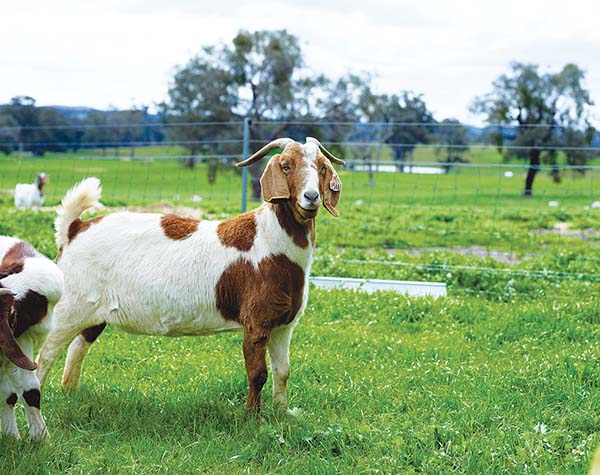
90% of goat meat in the industry comes from Rangeland goats. These goats primarily live in and were bred in Australia. Breeders look for goats that are tall, wide, and with short hair.
Rangeland goats can live in dry areas, they still reproduce well in dry conditions, they are low maintenance, and they are great goats to mate with other goats. Boers are the most common goat bred for meat along with Rangeland goats.
4. Kalahari
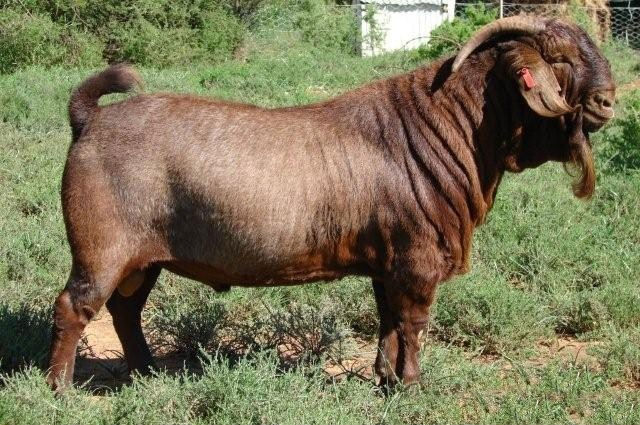
The Kalahari, also known as the Kalahari Red, is a beautiful animal that mostly lives in South Africa. Living here, the animal has been bred to withstand hot temperatures and dry weather.
The most favorable attribute of the Kalahari goat meat is that it is more tender than other breeds. The meat is also rather lean.
These goats are good to breed because they are durable. They have also been bred to be immune to common diseases and parasites in the area. They breed throughout the year and generally birth three kids every two years.
As the name suggests, the Kalahari Red is commonly a reddish/brown color. This color is especially useful for hiding in its surroundings.
The Kalahari Red is tall and long. In order to make them meatier, they can be bred with larger breeds.
5. Kiko
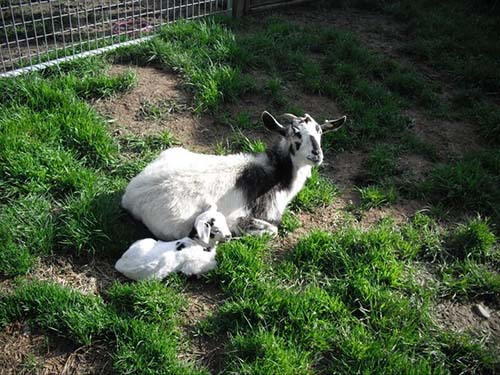
This is a new breed created as recently as the 1980s in New Zealand. They were bred specifically to create an adaptable meat goat. This was done by breeding feral goats with Anglo-Nubian goats, Saanen goats, and Toggenburg goats. These goats are low maintenance and can survive most conditions.
Positive characteristics of the Kiko goat include weighing more, good mothering skills, better milk production, lean meat, and good hooves.
6. Nubian

Nubian is a dual-purpose goat breed; they’re great for milk and meat production. Males can weigh up to 175 pounds. Because of the large stature of these goats, they are often used for meat. Sometimes, they will specifically be mated with Boers to make even larger goats for meat.
7. Myotonic
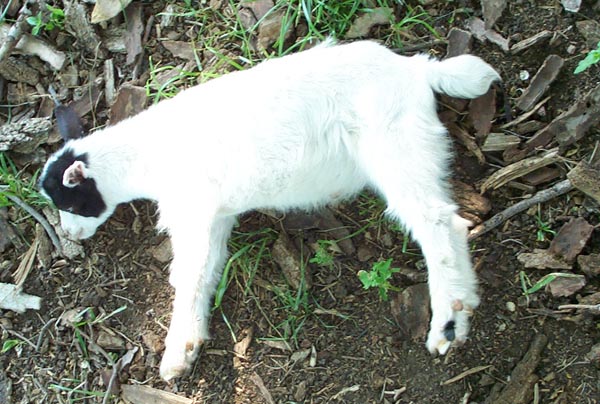
Myotonic goats, also known as fainting goats, are known for their unusual reaction when the goat is scared or excited: freezing for a couple second and “fainting”. The hereditary condition is called Myotonia Congenita, which causes the voluntary muscles to contract for 15-20 seconds and makes them fall if they’re off balance. But unlike the name, they are fully conscious and not actually fainting.
This goat is slowly not being used for meat production anymore because it was labeled “threatened” by The Livestock Conservancy (although the breed is now recovering). However, they used to primarily be used for goat meat.
The Myotonic goat can grow to about 25 inches tall and weigh 174 pounds. This is one of the smaller breeds of meat goats. They also have distinct eyes that pop out of their head.
While the “fainting” condition is not passed on to cross breeds because it is recessive, purebred Myotonics are not generally crossed with other breeds because the crosses lost their most desirable traits: friendliness, affection, and easiness to manage.
8. Black Bengal
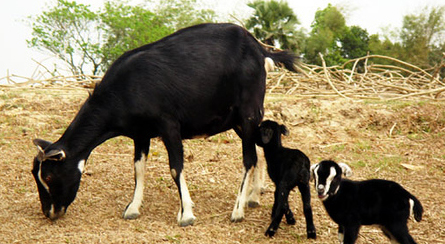
25 million Black Bengal goats can be found in Bangladesh. A rather poor nation, people with Black Bengals find a way to support themselves with its milk and meat. Goats are relatively easy to care for, house, and feed, so it’s a good option for the people. If you have a safe place by a food source, they can even feed on natural sources.
The goats are good breeders and can give birth to 2 – 3 kids twice a year. Black Bengals start reproducing at about 15 months old.
With Bangladesh being a less affluent country, the farmers use everything that they can from the goat. They sell the milk, the coat, and, most importantly, the meat. The goat can produce 11 kg of meat at a time. Their coat can weigh 20 kg. Meat and coat are the most important products from this animal, as it does not produce milk well.
As the name suggests, the goat is usually dark in color. The body is lean, and these goats are short. They have ears on the top of their heads and have small to medium horns.
These goats can also be found in West Bengal, Bihar, and Orissa.
9. Verata
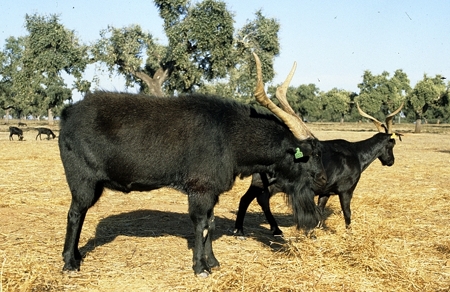
The Verata goat is known primarily for its unique, twisted horns. They are found mostly in Vera, Spain. There are about 17,000 Verata goats in Spain today. Like most breeds produced for meat, they are quite durable and strong. They can survive in all climates. They also are easy for farmers to manage. They can find food sourced instinctively and adapt well.
These goats are on the small side and reach about 7- centimeters tall and weigh 70 kilograms. They are dark in color (black or brown), and even 40% of the does have beards.
Under proper conditions, the Verata goat can breed prolifically. A farmer can expect three kids every two years. When this does happen, a farmer can expect the goat to produce milk for 175 days and produce about 150 liters. When used for meat, kids will be ready at around 45 days old.
Conclusion
Goats are not only adorable and typically friendly animals, but they are also tasty and healthy.
The milk is easier for digestion, and the meat is lean. Goat produces a unique flavor as well, resulting in special tasting milk and additional products.
There are numerous breeds of goats. The dairy goats generally produce large amounts of milk throughout the entire year. They also generally have high-fat content to make thicker products.
Goats made for meat production are bred to be large and reproduce often. The larger the goat, the more meat it will yield. The more goats bred for meat, the more meat the farmer will produce as well.
Knowing the proper breed of goat for the job is essential.
Some goats are better for different goals. If you are debating what type of goats that you want on your farm, you should now have a good starting point!
